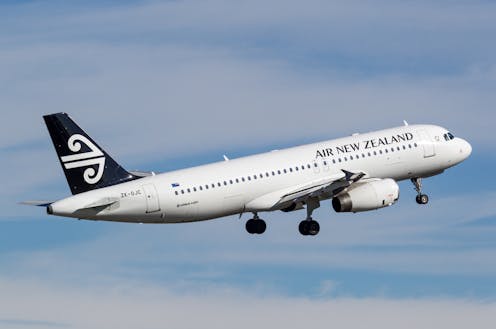The travel bubble with New Zealand includes NSW and the NT. Why have other states missed out?
- Written by Hassan Vally, Associate Professor, La Trobe University

New Zealanders will soon be able to travel to New South Wales and the Northern Territory, thanks to a limited travel bubble, announced today.
From October 16, people from New Zealand will be able to travel to NSW or the NT without having to undergo a quarantine period, as long as they haven’t been in a designated COVID-19 hotspot in New Zealand in the previous 14 days.
But the deal doesn’t apply to other states and territories in Australia.
And it doesn’t work the other way — Australians can’t travel to New Zealand yet.
Why only NSW and the NT?
When considering opening up to allow New Zealanders in, Australia had to ask, what risk does New Zealand pose to us? Right now, the risk is very small.
New Zealand has been renowned for its success in controlling COVID-19. Currently the country has 43 active cases. And of all confirmed and probable cases it’s recorded to date, only 5% have been locally acquired from an unknown source.
So if you live in NSW or the NT, there’s no need to be concerned about the infection being imported with this arrangement.
Read more: One-way trans-Tasman travel bubble to start mid-October
As for why the deal only applies to these two jurisdictions, we don’t yet have a lot of detail. But reports indicate the issue of opening up to New Zealand came up at the last national cabinet meeting, and NSW and the NT were the only ones to accept the offer at that point. It wouldn’t appear New Zealand singled them out.
It’s unclear why the other states and territories haven’t agreed yet — but we can expect they’ll follow at some point. In announcing the deal, Australia’s Deputy Prime Minister Michael McCormack speculated South Australia would be “the next cab off the rank”.
It’s good news for Australians and New Zealanders
The trans-Tasman travel bubble has been on our collective radar since much earlier in the pandemic. This represents the first step to having a two-way travel bubble with New Zealand — and perhaps, eventually, an even broader bubble.
This deal will provide a boost to economy and trade, could kick start tourism in these states, and see family and friends reunited. It could also allow New Zealand to serve as a link between Australia and the Pacific, by providing a pathway for Pacific Islanders to enter NSW and the NT for work.
But it doesn’t make much sense to have a one-way bubble. The benefits would be significantly greater — for both parties — if the bubble went both ways. So what’s holding New Zealand back from accepting Australians?
Read more: Why a trans-Tasman travel bubble makes a lot of sense for Australia and New Zealand
A questions of hotspots, perhaps
While NSW has had low levels of community transmission in recent weeks, the NT hasn’t had a locally acquired COVID-19 case for months. So you would expect the risk of spreading coronavirus with travel the other way — from NSW and the NT to New Zealand — would also be small.
But it makes sense, and is sensible, for New Zealand Prime Minister Jacinda Ardern to be cautious about opening up to a country where there are still some pockets of community transmission.
The problem, however, may not be so much in the fact a small amount of community transmission is occurring. It may be that there’s still a problem in Australia around defining hotspots. There’s been confusion around what constitutes a hotspot in Australia for some time, and there is still no agreement on a national definition.
One could speculate that for New Zealand to feel confident to open up to Australia, it needs to feel comfortable it can exclude people from hotspot areas — and this requires a clear agreement on what the definition of a hotspot is.
The prospect of a two-way bubble should provide impetus for the government to get the hotspot issue ironed out.
Travel bubbles must be fluid
We’ve seen travel bubbles in other parts of the world during the pandemic. For example, various countries in Europe have banded together in this way. But with many countries experiencing a resurgence in COVID-19 cases, we’re starting to see how fragile these arrangements can be.
Importantly, inclusion in a bubble has to depend on all parties keeping control of the virus. Travel bubbles have to be fluid, flexible and responsive to any outbreaks.
Authors: Hassan Vally, Associate Professor, La Trobe University




